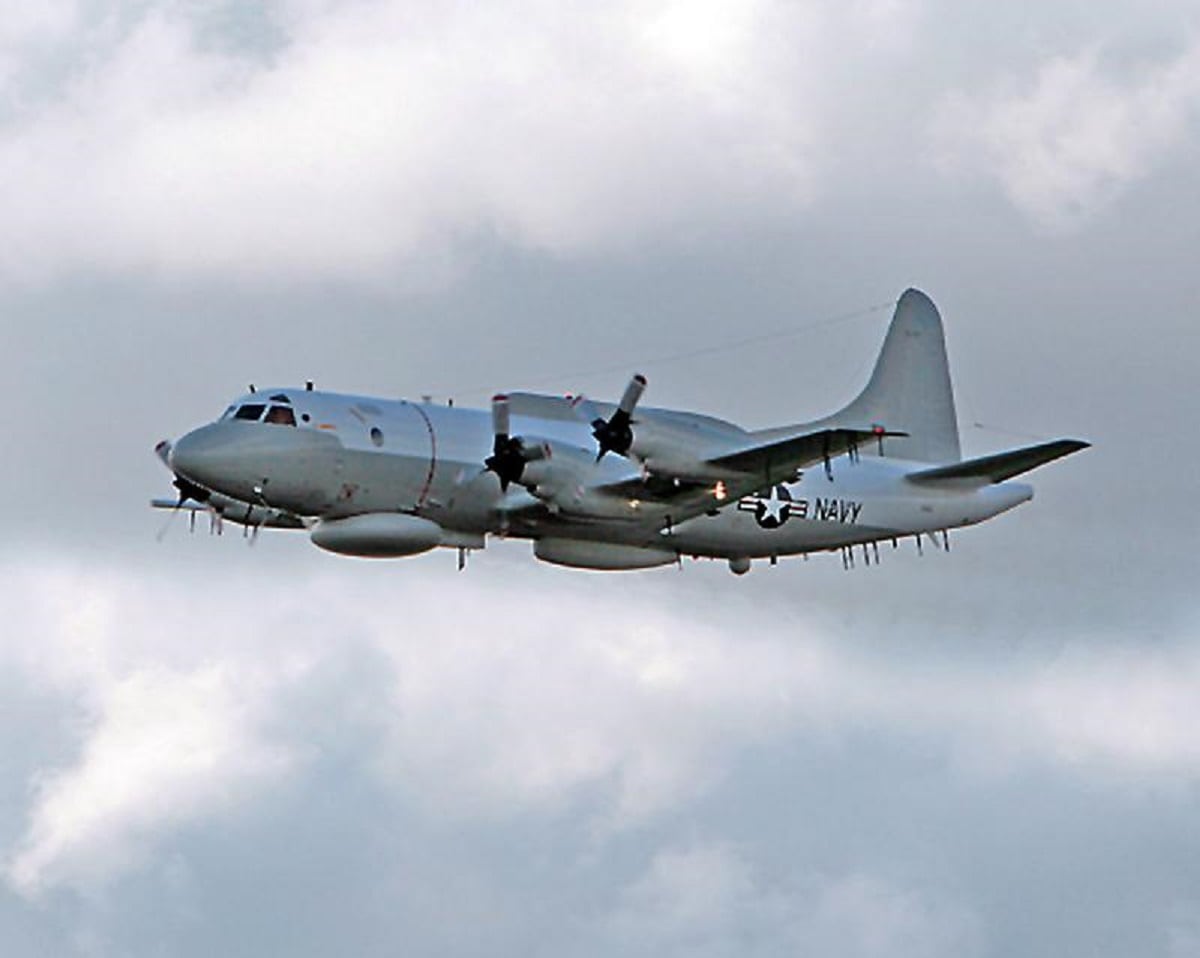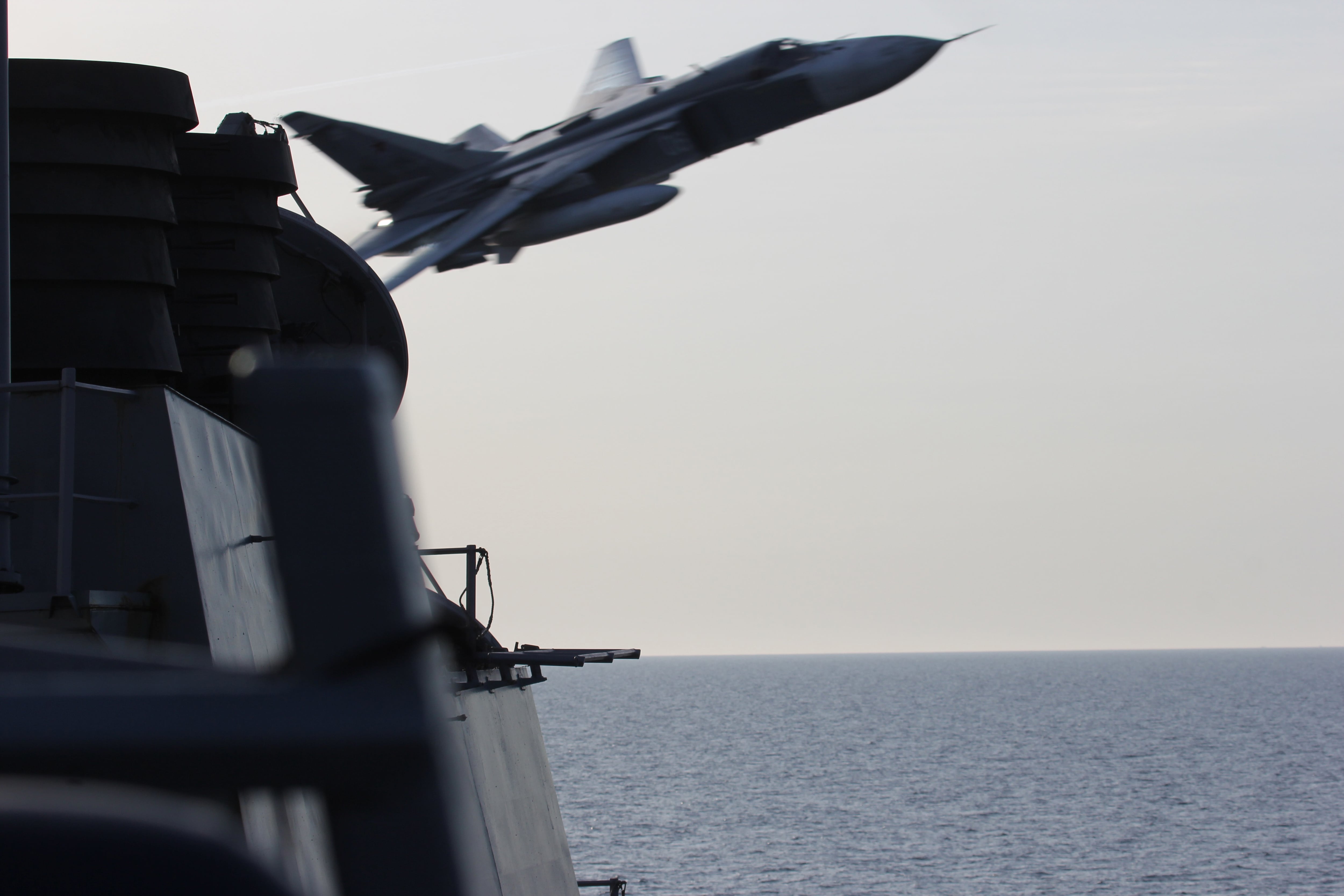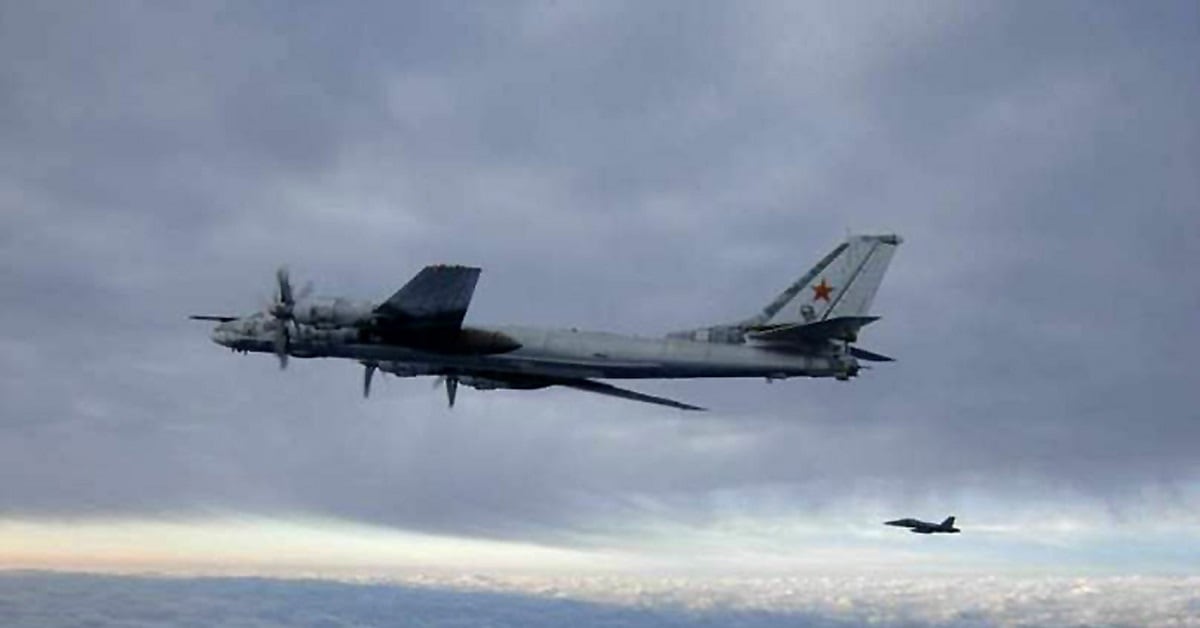A Russian fighter jet flew dangerously close to a U.S. Navy reconnaissance plane on Monday over the Black Sea, the latest incident showcasing simmering tensions in Eastern Europe between Moscow and Washington.
A Navy EP-3E Aries II reconnaissance aircraft was flying in international airspace when it was intercepted by a Sukhoi Russian Su-27 “Flanker”fighter in an interaction that lasted about 25 minutes, according to a Navy release and interviews with senior officials.
The Russian jet conducted “a high speed pass directly in front of the mission aircraft, putting at risk the pilots and crew,” according to the written statement from the 6th Fleet emailed to Navy Times.
“They buzzed us,” added Pentagon spokesman Eric Pahon during a Monday press briefing. “They got a little too close.”
The Russian pilot then made an additional pass, zipping close to the U.S. plane’s right side before banking away and applying its afterburner, according to a video of the encounter released by the Navy.
“They engaged the afterburners and the whole aircraft shook,” Pahon said.
RELATED

The Navy EP-3E aircraft in Monday’s incident belongs to the “World Watchers” of Fleet Air Reconnaissance Squadron 1 operating from Souta Bay, Greece.
The Navy crew reported that they felt turbulence after the first pass and vibrations from the second but their signals reconnaissance plane was operating in accordance with international law and never tried to provoke the Russian response, 6th Fleet and Pentagon officials said.
“While the Russian military is within its right to exercise within international airspace, this interaction was irresponsible,” the 6th Fleet statement said. “Unsafe actions increase the risk of miscalculation and potential for midair collisions.”
Although Russian intercepts occur on a regular basis, Pentagon officials say that most are conducted in a safe and professional manner.
Pahon insisted that Monday’s incident was the polar opposite.
“What made it unsafe was that they didn’t establish radio contact,” he said. “They came really, really close to our aircraft.”
RELATED

Pentagon officials told Navy Times that the EP-3E’s transponder was turned on for the duration of the mission.
In May, a Russian jet closed to within 20 feet of a Navy P-8 Poseidon plane over the Baltic Sea.
Five months earlier, another Russian Su-27 got within five feet of a Navy Aries aircraft before crossing the American plane’s path, forcing it to enter the Russian fighter’s flight wash.
And in November of 2017, a P-8 flew through the wake of another Russian jet’s afterburners, causing the American plane to roll 15 degrees and suffer what U.S. officials claimed was “violent turbulence.”
RELATED

These sorts of interactions are supposed to be guided by the 1972 Agreement for the Prevention of of Incidents On and Over the High Seas, or INCSEA.
INCSEA was designed to tamp down Cold War tensions by preventing potentially cataclysmic confrontations between the great powers that could trigger World War III.
It was boosted by another 1989 pact, the Agreement on the Prevention of Dangerous Military Activities. Both deals were reaffirmed by the Russian Federation in 1998.
But tensions between Moscow and Washington have flared since Russia’s 2014 annexation of Ukraine’s Crimean Peninsula, which juts into the Black Sea.
Moscow’s occupation of Crimea and its ongoing meddling in Ukraine’s civil war sparked economic sanctions against Russia by America and its European allies.
Those, in turn, triggered interference by Russian hackers in America’s 2016 presidential election and a rising number of incidents between NATO aircraft and surface vessels and Moscow’s military.
Geoff is the managing editor of Military Times, but he still loves writing stories. He covered Iraq and Afghanistan extensively and was a reporter at the Chicago Tribune. He welcomes any and all kinds of tips at geoffz@militarytimes.com.
Tara Copp is a Pentagon correspondent for the Associated Press. She was previously Pentagon bureau chief for Sightline Media Group.



